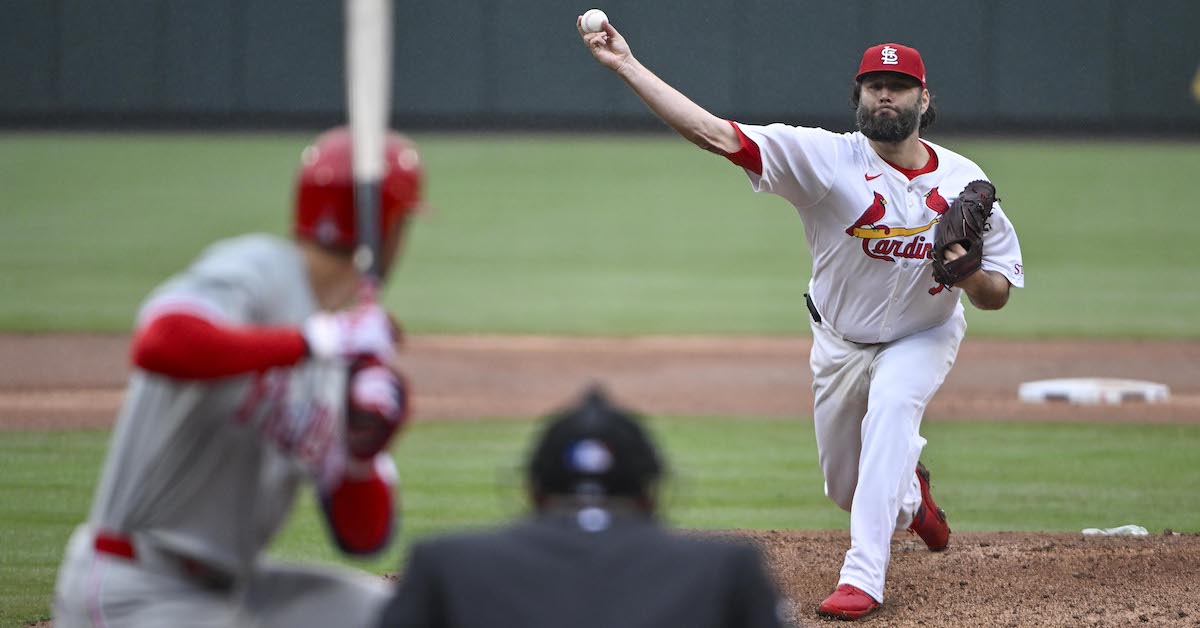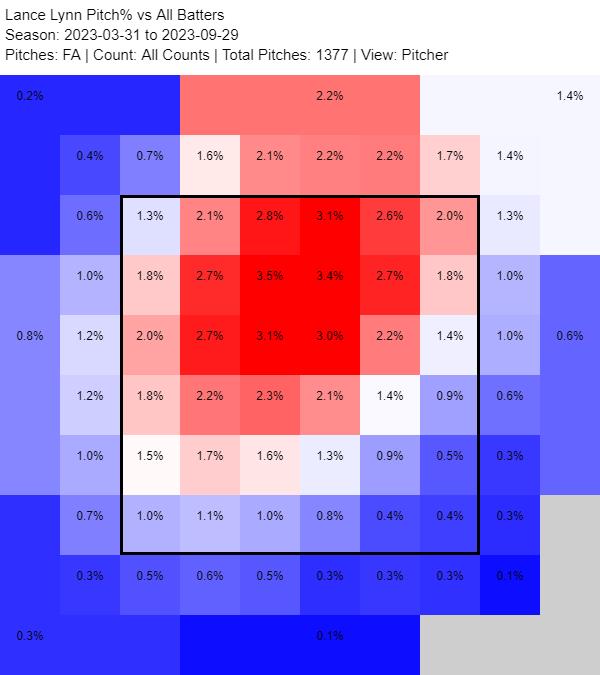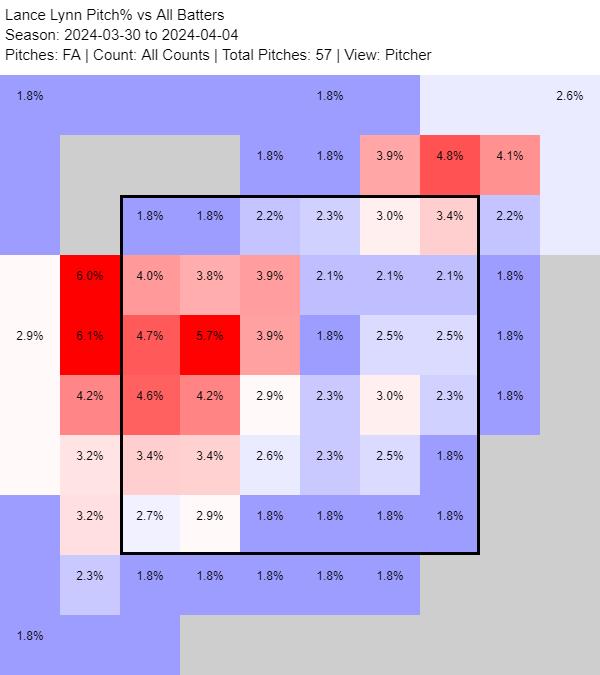
Jeff Curry-USA TODAY Sports
Lance Lynn is my favorite player in baseball; I find it easier to just admit this up front and let readers view my work through that lens, instead of going through the trouble of trying to obfuscate this very obvious truth.
One of the things that drew me to the big man in the first place was his reliability. Lynn had been many things over his long and venerable big league career: A four-seam specialist, a sinkerballer, an ace, an innings eater, an underrated gem, a star, a national hero. But he’d never been bad before.
In 2023, Lynn still threw 183 2/3 innings, but he gave up about 183 2/3 home runs over that span. Not really, but the actual number — 44 — was so high I invoked the late Jose Lima when I wrote up Lynn’s signing in November. On a scale from zero to things you don’t want, it’s not what you want.
There’s been some optimism around the Cardinals heading into 2024, even though they’re coming off their worst full-length season since 1990. (Before last year, the Cardinals hadn’t had any kind of losing season since the Tampa Bay Rays were the Devil Rays.) And a lot of that has to do with the pitching. Last season, the Cardinals finished 27th in the league in ERA- and 29th in strikeout rate. The only team to strike out a lower percentage of its opponents was the Rockies, a club with a team-building outlook from a long time ago and a stadium far, far away from sea level.
Last winter, the Cardinals aimed to remedy that issue by signing three veteran free agent pitchers: AL Cy Young runner-up Sonny Gray, 15-game winner (and former Mizzou standout) Kyle Gibson, and Lynn. Lynn, of course, was originally a first-round pick of the Cardinals, and it was in St. Louis that he won a World Series and made his first All-Star team more than a decade ago.
The Cardinals killed $11 million worth of fatted calf to bring their prodigal son home, but Lynn turns 37 next month, in addition to coming off the worst season of his career. How much could they expect?
It’s been a mixed bag, but overall the results seem fairly promising. Lynn blanked the Dodgers over four innings in his first start of the season, but he gave up three home runs to the Marlins in his second start, which is like giving up six or seven home runs to a normal team, the way Miami’s started the season. On Wednesday, he opposed Aaron Nola in a getaway game against the Phillies and held them to two unearned runs over five innings.
Which perhaps undersells his performance: Lynn’s two runs were the result of Victor Scott II’s losing a routine fly ball in the rain with two outs in the first inning. One run scored on the error itself; a second came home on an Alec Bohm single the following at-bat. That single, a groundball that came after Lynn should’ve been out of the inning, was the only hit he allowed all afternoon.
There’s a limit to the conclusions you can draw from one five-inning start, especially one played in conditions damp enough to kill Roy Batty. Lynn’s velocity was down across the board, but so was Nola’s. The Phillies starter, who ran his fastball up to 95 mph at times last year, dropped in an 87.3 mph four-seamer at one point. Far from grip-it-and-rip-it weather, to say the least.
Lynn has been around so long he’s lived through something like four or five revolutions in mainstream pitch design and usage. If I’m exaggerating, it’s not by much; Lynn’s first major league pitching coach was Dave Duncan, the great sinker evangelist. Lynn’s been consistently good for so long because of his adaptability. He’s thrown three fastballs in various combinations, as well as two different breaking balls, and he’s mixed and matched them together to suit whatever the fashion of the moment is.
When the Dodgers traded for Lynn last year, he’d been knocked around a bunch in the first half of the season with the White Sox. Lynn, ever open-minded, started throwing more four-seamers than he had in four years. Back in 2019, Lynn’s four-seamer was the second-most valuable individual pitch in all of baseball, according to Baseball Savant.
But by late 2023, the four-seamer had an average velocity just above 92 and a below-average movement profile for its velocity. And here’s where Lynn was throwing it.

Those of you who have done your homework — by which I mean, anyone who’s watched an entire baseball game before — will understand the correlation between throwing that pitch in that spot and giving up more home runs than anyone else in baseball.
Since the start of the 2023 regular season, Lynn has allowed more home runs off his fastball (24, counting last year’s playoffs) than any other pitcher has allowed on any individual pitch. Only four other pitchers have given up 20 or more home runs on a single pitch type, and only 55 pitchers have allowed 24 or more home runs total in the past 54 weeks of competitive action.
Lynn’s plan for 2024 seems to be this: Stop throwing letter-high four-seamers over the heart of the plate.

This heat map only includes Lynn’s first two starts, but it was much the same story on Wednesday. His most-used pitch was his four-seamer, which he threw 40 times, but only 18 of those pitches found the zone.
The weather probably had something to do with it, and Lynn wasn’t getting many borderline calls, but against the Phillies he only threw 42 of 94 pitches in the strike zone. And 10 of those 42 pitches were classified as middle-middle. Lynn walked four batters and ran three-ball counts on four others; that’s eight three-ball counts out of 21 batters faced, which is not a great ratio. Lynn also endured a stoppage right before facing Bryce Harper with the go-ahead run on because his belt betrayed him.
But the results, on the whole, were pretty great. Lynn was able to manage this for two reasons. First, the Phillies’ offense is going through it a little bit right now. But second, Lynn’s cutter and slider were really effective. The cutter has tight vertical movement in the upper 80s, while the slider — much loopier, and in the upper 70s for most of the afternoon — allowed him to change speeds and get Phillies hitters to swing over the ball. Five of Lynn’s nine whiffs and four of his six strikeouts came on cutters.
In order for this to work, Lynn is going to need to keep getting help from hitters who want to chase, because as nice as his cutter looks, his entire repertoire is not what it was five years ago. But it wouldn’t be the first time Lynn has molted his previous form and turned into something new.
Source
https://blogs.fangraphs.com/save-the-last-lance-for-me/
 Backyard GrillingWeekend WarriorsAdvice from DadBeard GroomingTV Shows for Guys4x4 Off-Road CarsMens FashionSports NewsAncient Archeology World NewsPrivacy PolicyTerms And Conditions
Backyard GrillingWeekend WarriorsAdvice from DadBeard GroomingTV Shows for Guys4x4 Off-Road CarsMens FashionSports NewsAncient Archeology World NewsPrivacy PolicyTerms And Conditions
